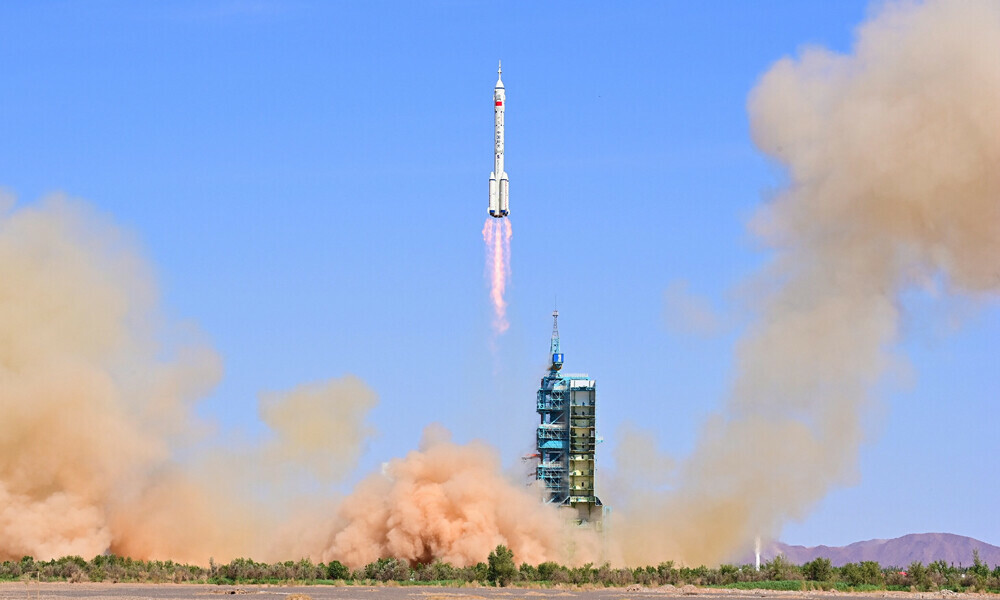Pakistan marked a historic milestone on Friday with the successful launch of its first home-made observation satellite, PRSC-EO1.
The satellite was launched from the Jiuquan Satellite Launch Centre in northern China, in collaboration with the China Aerospace Science and Technology Corporation (CASC).
The satellite, spearheaded by the Space and Upper Atmosphere Research Commission (SUPARCO), is equipped with cutting-edge electro-optical sensors capable of capturing high-resolution data and images of Earth’s surface.
Electro-Optical Sensors: Revolutionizing Data Collection
This allows the satellite to capture precise and actionable data for various applications, including agriculture, urban development, and disaster management.
- Resource Monitoring: With PRSC-EO1, Pakistan can efficiently map and monitor natural resources, enabling sustainable development and conservation efforts.
- Disaster Response: The satellite’s real-time data will significantly enhance the nation’s disaster preparedness and response capabilities, especially in flood-prone and earthquake-affected areas.
- Agricultural Development: By providing detailed insights into soil health, crop patterns, and irrigation needs, PRSC-EO1 will empower farmers with data-driven strategies.
- Urban Planning: Cities across Pakistan can leverage the satellite’s imaging capabilities to design better infrastructure and manage urban sprawl effectively.
Collaboration with China: A Model for Bilateral Innovation
China’s Long March-2D carrier rocket facilitated the launch of PRSC-EO1, along with two other satellites, Tianlu-1 and Blue Carbon 1. This partnership reflects the robust ties between Pakistan and China in space exploration and technology transfer.
This launch further demonstrates China’s leadership in commercial space technology and its commitment to fostering international collaboration.
Prime Minister Shehbaz Sharif hailed the launch as a testament to Pakistan’s growing capabilities in space science and technology.
He emphasized the importance of SUPARCO in leading the nation’s space initiatives and urged the agency to develop a comprehensive business plan for future advancements, including the PakSat-MM1 satellite.
Market Growth and Trends
Currently valued at $5 billion, the earth observation satellite market is among the fastest-growing sectors in the commercial space industry.
According to Novaspace, this market is projected to surpass $8 billion by 2033, driven by increased demand for high-resolution data and imaging solutions.
- Climate Monitoring: Satellites like PRSC-EO1 are instrumental in tracking climate change, monitoring deforestation, and studying oceanic patterns.
- Defense and Security: Earth observation satellites enhance national security by providing detailed surveillance and reconnaissance capabilities.
- Commercial Opportunities: Industries such as real estate, logistics, and energy can leverage satellite data for strategic planning and decision-making.
Global Context: Pakistan Joins the Elite Space Club
Countries worldwide are investing heavily in space technology to gain a strategic edge. The United States and China lead the field with extensive satellite networks, while India’s achievements, including the Chandrayaan missions, have showcased its prowess in space exploration.
Pakistan’s successful launch of PRSC-EO1 positions it as a rising player in this arena. By investing in indigenous technology, Pakistan not only reduces its reliance on foreign systems but also demonstrates its potential to contribute to global space science.
The PRSC-EO1 is just the beginning. Pakistan aims to develop a constellation of satellites to enhance its imaging capabilities and broaden its applications across sectors.
SUPARCO’s collaboration with international partners, especially China, will be instrumental in accessing advanced technology and expanding Pakistan’s footprint in space exploration.
The success of PRSC-EO1 is expected to inspire a new generation of scientists and engineers. Moreover, the satellite’s applications in agriculture, urban planning, and disaster management could yield significant economic benefits, boosting Pakistan’s GDP.


